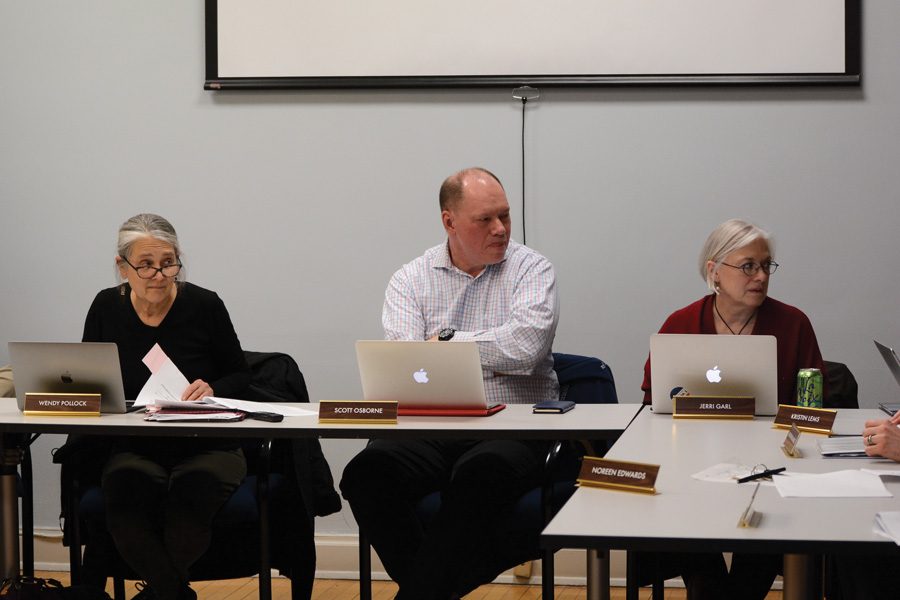Evanston Environment Board considers alternative energy sources, plans task force
Kate Salvidio/The Daily Northwestern
Members of Evanston’s Environment Board speak at a meeting Thursday. Board members will assemble a task force to present city officials with information regarding alternative energy sources.
April 13, 2017
Members of Evanston’s Environment Board decided Thursday to put together a task force to investigate alternative energy sources to present to city officials late this year.
Scott Osborne, a committee co-chair, brought up alternative energy sources on a national and state level during the meeting. He said though the use of coal plants and nuclear energy has been declining across the country, wind and solar power — two renewable sources of energy — still only make up about a small percentage of the energy produced nationally. According to the Institute for Energy Research, wind and solar power made up about five percent of national energy production in 2016.
Evanston pays Renewable Energy Certificates for its renewable energy consumption, Osborne said. RECs verify electricity is generated from a renewable energy resource, which can be sold and traded once the electricity has been fed into the grid. These “green credits” provide a means for the purchase of alternative energy sources that are added to and pulled from the electrical grid.
Osborne suggested that Evanston look into community solar power where panels are installed on a series of buildings and provide residents power without relying on the traditional grid. He added this would follow a larger trend of homes going off the power grid by relying on solar or geothermal energy.
“Even though we’re increasing in population, (energy demand) is going down,” Osborne said. “Pricing needs to stay the same. … People from the industry call this the ‘death spiral for the utilities’.”
Committee members raised concerns about the ability to gather solar power in times when there is not much sunlight — like evenings and winter months. Committee member Noreen Edwards said peak energy demand usually comes in the summer due to added air conditioning usage. And in the summer, Edwards added, there is more sunshine overall.
Board member Cherie Fisher mentioned Project Sunroof, a Google initiative that allows for a calculation of a building’s solar potential via Google Maps satellite imagery. According to the project’s website, Evanston’s buildings currently hold a 54 percent solar viability.
The algorithm measures buildings to determine where installed solar panels would receive at least 75 percent of the maximum annual sun in the county.
Linda Young, another board member, said members should express their support of the state’s Renewable Portfolio standard, which states that by 2025-26, 25 percent of the energy used must be from renewable sources.
“We want to support that in Evanston and take a part in trying to achieve that,” Young said, adding that Illinois is currently not on track to meet its goal.
The task force will present its findings to the new mayor and aldermen once they are sworn in May 8, Osborne said. The board reports to the Human Services Committee; when the new City Council takes office, an aldermanic representative will be designated to the Environment Board.
Email: [email protected]
Twitter: @kristinakarisch


